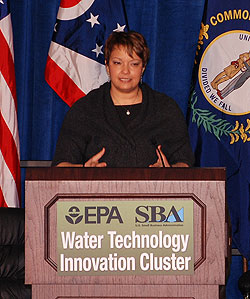EPA@40: Tell Us Your Story
by Richard Freitas
I’ve worked as a staff scientist at the EPA Region 9 San Francisco office since 1990, and much of my work involves the investigation of groundwater and surface water contamination. The work is often stressful as it regularly involves enforcement of the Superfund hazardous waste laws. Over the years I’ve worked on polluted sites throughout the southwest, helping communities protect their drinking water and clean water supplies from dangerous pollutants and other health threats. Most recently I worked on the Iron Mountain Mine, where our office was overseeing the dredging of contaminated sediments from Spring Creek which flows into the Keswick Reservoir and is the source of drinking water for the City of Redding, a city of around 80,000 people. The dredging of Spring Creek removed contaminated sediments before they could flush into the Reservoir and possibly affect the local drinking water supply.
Though I’ve put in time on a number of projects like Iron Mountain Mine during my 20 years with EPA, one of my best memories is of a project in which I was not involved. One day, on my drive back from a nearby San Francisco Bay wildlife refuge, I saw a sign on the City of Hayward, California wastewater treatment plant which read “Funded by a grant from USEPA.” Hayward is a small, largely lower-income city along the coast of the San Francisco Bay. I grew up in the city and went to college there. When I was a kid, I used to see toilet paper and other debris floating along the bayshore. Thanks to the wastewater plant, raw sewage is no longer discharged to this sensitive wildlife habitat. This may not mean a lot to anyone else, but having grown up Hayward, it meant a great deal to me to see the Agency I’ve worked so hard for all these years do something good for the city.
About the author: Rich Freitas is an Environmental Scientist with the Quality Assurance Office of the Environmental Protection Agency Office in San Francisco. He holds a Bachelor of Science degree in Geology from the California State University, East Bay with graduate studies in the Dept.of Geological Sciences at the University of Toledo, Ohio.


 Each week we write about the science behind environmental protection.
Each week we write about the science behind environmental protection.  Yesterday, EPA Administrator Lisa P. Jackson joined the administrator of the
Yesterday, EPA Administrator Lisa P. Jackson joined the administrator of the  By Ameshia Cross
By Ameshia Cross By Christina Catanese
By Christina Catanese